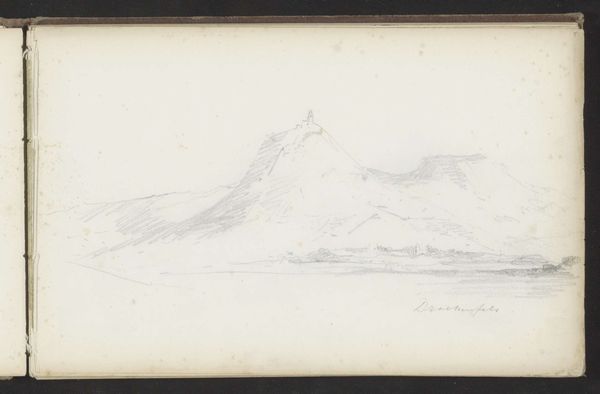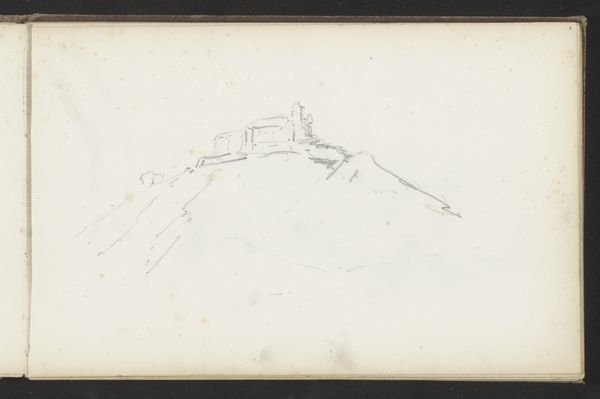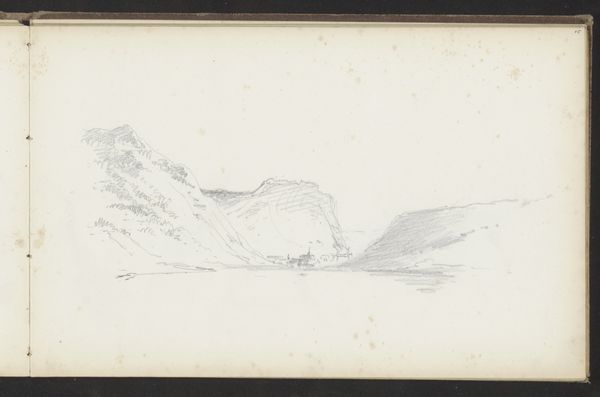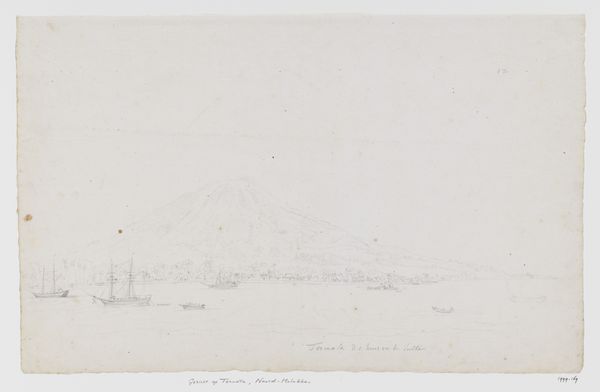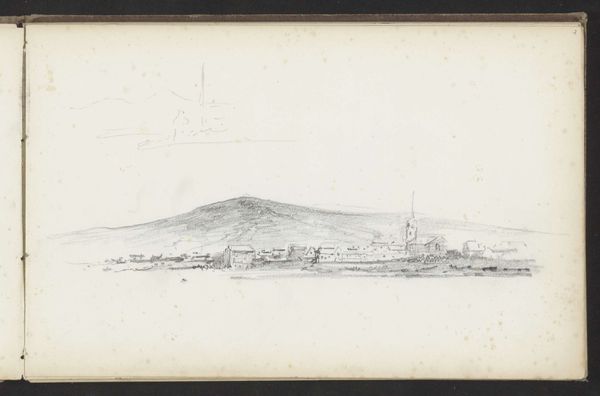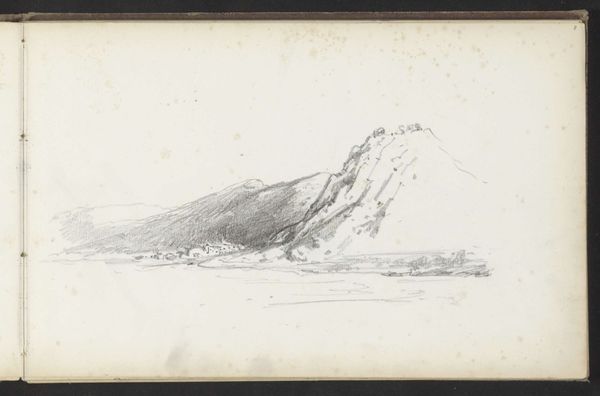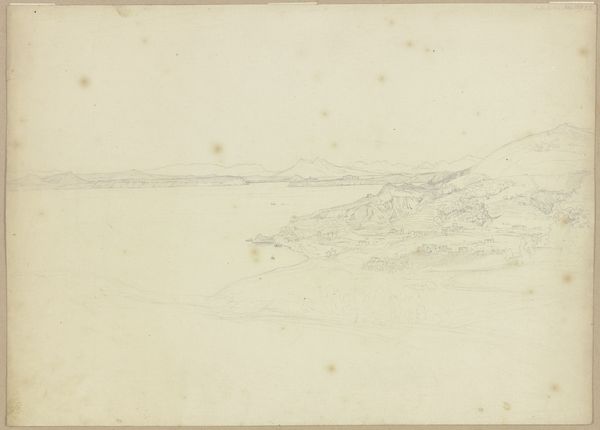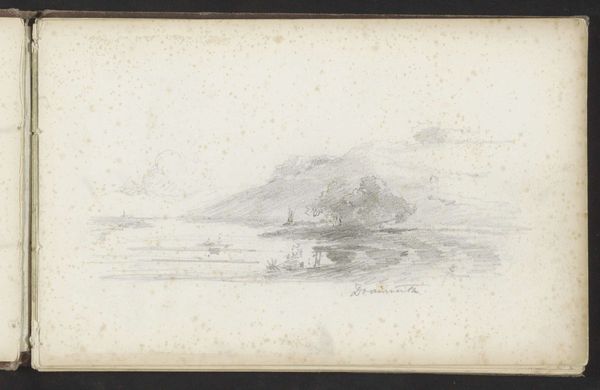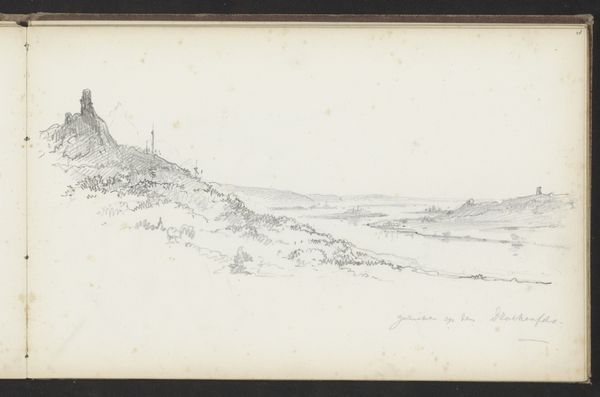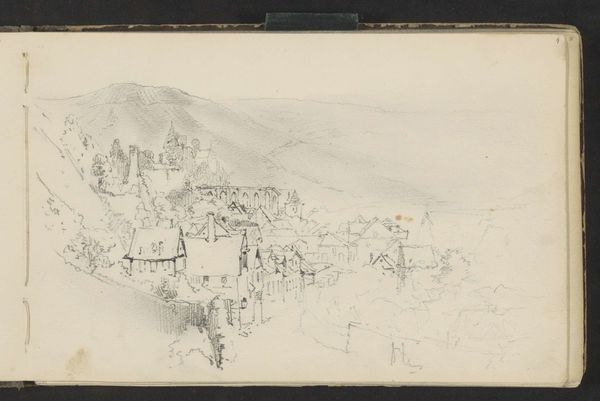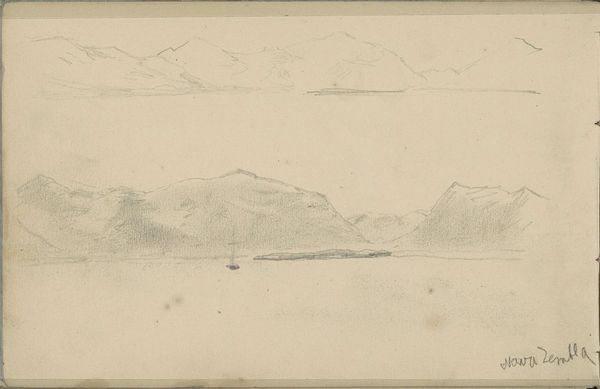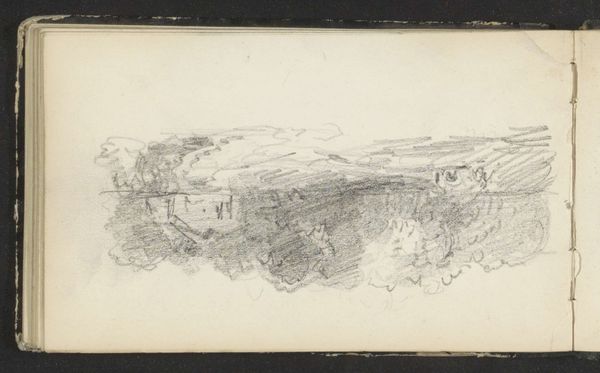
Copyright: Rijks Museum: Open Domain
Editor: My first impression is that this piece has a delicate sort of melancholy to it. The soft pencil lines, the vastness of the landscape… it feels like a fleeting moment captured. Curator: It’s quite interesting, isn't it? This pencil drawing is titled "Fort Ehrenbreitstein aan de Rijn," attributed to Maria Vos, dating from somewhere between 1860 and 1865. It lives here at the Rijksmuseum. You know, when you mentioned melancholy, I immediately thought of Romanticism, which really saw beauty in somber introspection, right? Editor: Absolutely. And forts, those physical embodiments of power and defense, often signify the sociopolitical undercurrents shaping society. The perspective suggests we’re distant observers. Perhaps Vos felt disconnected or powerless amid societal shifts? It seems to echo anxieties around modernization. Curator: Yes! You feel that, too? Because Vos has this way of rendering structures, be they fortresses or humble cottages, with this… transparency? It is not quite ethereal, but you could mistake this fortress for mist in the air, it is almost... provisional, light on the page. Editor: Provisional. That's powerful, isn’t it? Consider the material context: drawing allows for a sort of provisionality that sculpture, for instance, might not. A fortress depicted so tentatively speaks volumes about anxieties toward structure and permanence. Curator: She certainly captures the sublimity of the landscape. Vos flattens our viewpoint by tilting up the scene so the fort looms above like a distant giant. It’s as though the scale itself becomes a commentary on human ambition versus nature’s grand indifference. Or maybe Vos just wanted to emphasize how small we really are against this imposing background, this silent old god, overlooking our existence. Editor: Scale is key here. In the way she draws, the scene isn’t about celebrating national pride but something more uncertain and contemplative, almost resistant. Was this intended as a critique of Prussian militarization during the Rhine crisis? Curator: I am sure such interpretation has more than a grain of truth to it, even if she never spells out such feelings to us! For me it also echoes that era's fascination with ruins and a recognition of our short tenure upon the earth, a kind of bittersweet sigh across time. Editor: This whole exercise illuminates the potential to re-examine artworks beyond canonical narratives, isn’t it? Looking at art through lenses of class, gender and other such structures enriches the experience, even subverts our notions about their intentions. Curator: Yes, the piece speaks softly, but there’s a profound visual poetry whispering just beneath the surface. The longer we engage with it, the louder it becomes.
Comments
No comments
Be the first to comment and join the conversation on the ultimate creative platform.
